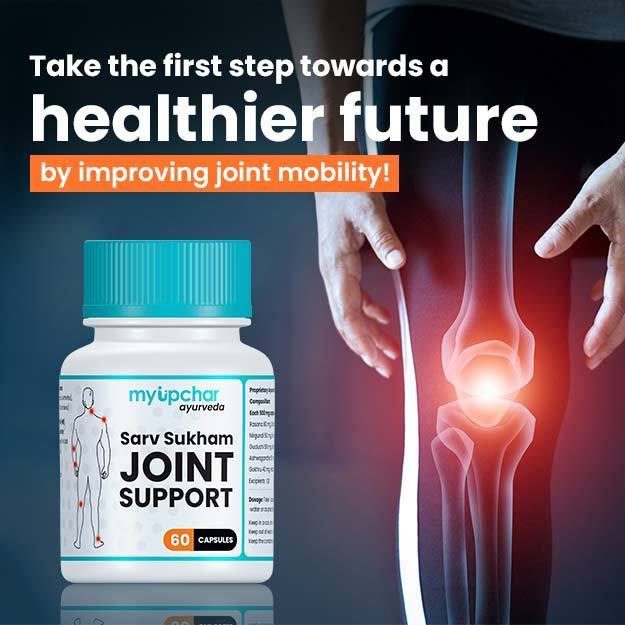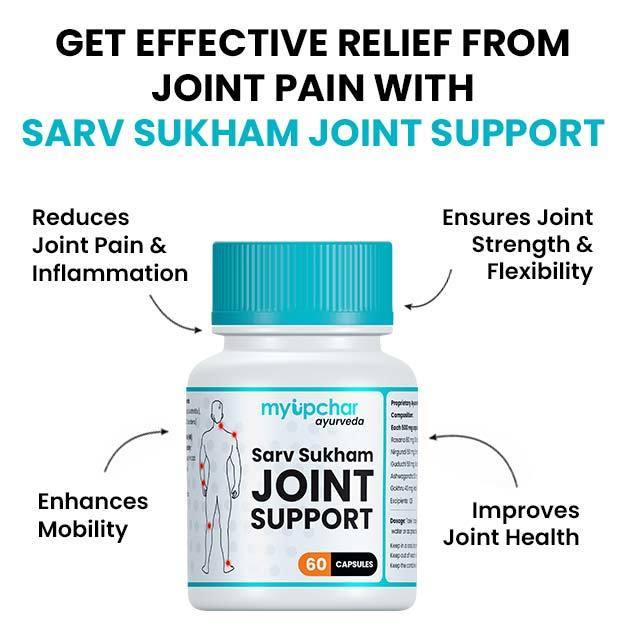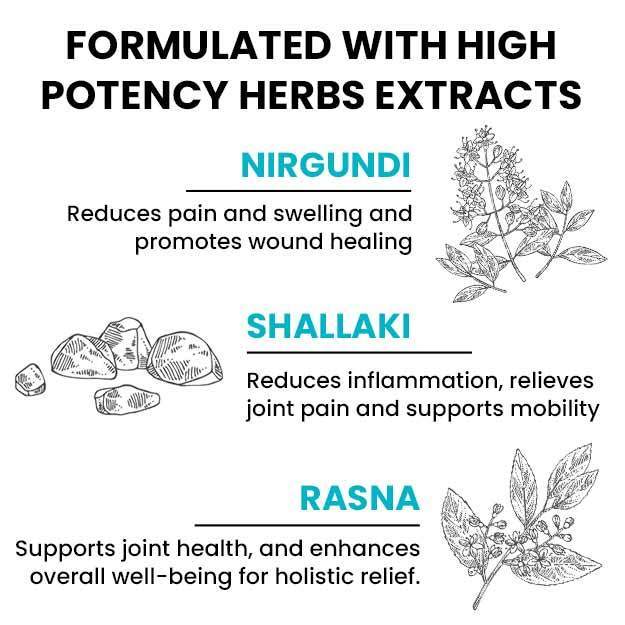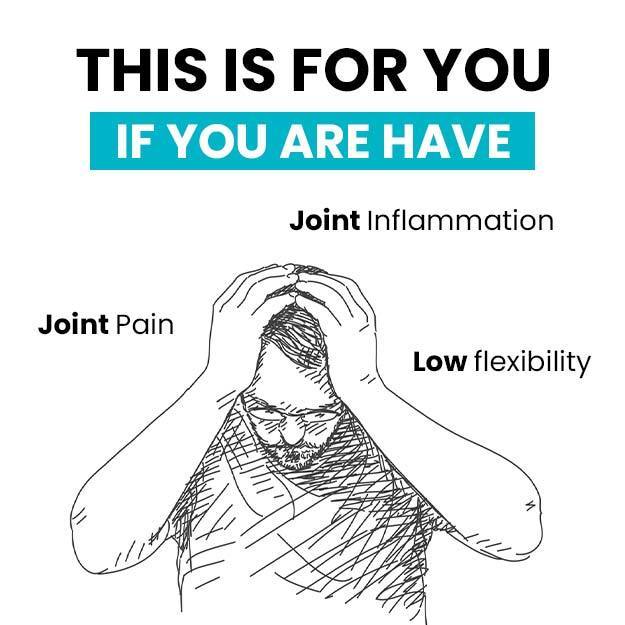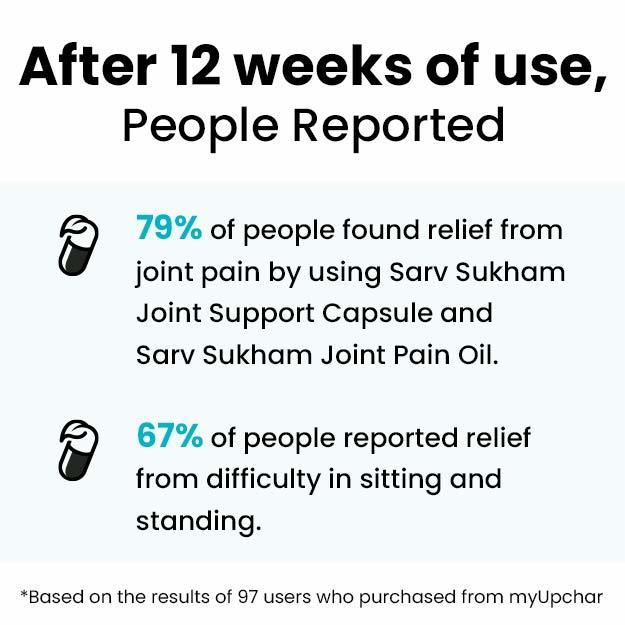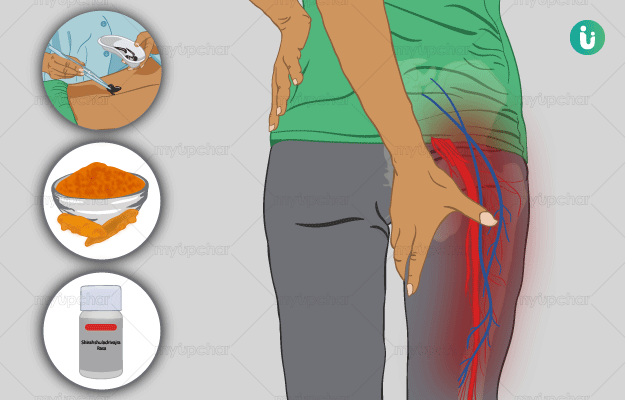Neuropathic pain, also called nerve pain or neuralgia is a condition in which the nerves carrying sensations to the brain are damaged. There are many causes of nerve pain such as alcoholism, vitamin B12 deficiency, diabetes, spinal nerve compression or inflammation, infection by human immunodeficiency virus (HIV), radiation therapy, chemotherapy drugs and herpes zoster infection. Approximately 30% of nerve pain is caused due to diabetes. Symptoms of nerve pain include spontaneous pain (pain without external stimuli) like shooting, burning and stabbing pain; tingling; numbness; evoked pain (increased pain due to normally painful stimuli, e.g., pinpricks and heat, or pain due to nonpainful stimuli, e.g., cold and pressure); difficulty in sleeping, and emotional problems due to disturbed sleep.
Conventional treatment of nerve pain includes the administration of opioid drugs and anti-depressants (which usually cause dependency) along with physical therapy and cognitive behavioural therapy.
Homeopathic treatment, on the other hand, relies on natural products for treatment. These remedies are prescribed on the basis of the symptoms and the miasms of the person (tendency to suffer from particular conditions). When taken as per the dosage prescribed by the physician, homeopathic remedies not only help relieve disease symptoms but also aid in overall improvement in health.
Some of the homeopathic medicines that are used for the treatment of nerve pain include platinum metallicum, phosphorus, agaricus muscarius, chamomilla, capsicum annuum, calcarea phosphorica, cocainum hydrochloricum, belladonna, oxalicum acidum, zincum metallicum, oleander and aconitum napellus.
- Homeopathic medicines for neuropathic pain
- Dietary and lifestyle changes for neuropathic pain as per homeopathy
- How effective are homeopathic medicines and treatments for neuropathic pain
- Side effects and risks of homeopathic medicine and treatment for neuropathic pain
- Takeaway
Homeopathic medicines for neuropathic pain
-
Platinum Metallicum
Common Name: The metal platinum
Symptoms: Platinum metallicum is an effective remedy for localised numbness and coldness. It is also useful to manage pain and some other symptoms as listed below:- A feeling as if one's limbs are tired and paralysed
- Cramp-like squeezing pain
- A sensation of tightness in the affected area
- Pain and numbness in facial bones
All the symptoms worsen in the evening and on sitting or standing for a long time. The symptoms get better on walking.
-
Phosphorus
Common Name: Phosphorus
Symptoms: Phosphorus is used to treat shooting pains, inflammation of the spinal cord, and paralysis. Other symptoms that can be treated using this remedy are:- Sharp and cutting pains
- Numbness of upper limbs (arms and hands)
- Weakness and shaking of arms and legs
Symptoms aggravate with changing weather, exertion, on touching the affected area and after consuming warm food and drink. All symptoms get better in open and cold air, on eating cold foods and sleeping.
-
Agaricus Muscarius
Common Name: Toad stool
Symptoms: Patients who benefit from this remedy feel as if they are being pierced by needles. The painful site also feels cold and numb. Few other symptoms that can be managed by this medicine are:- Stitching pains in body; the affected site may be tender to touch
- Stiffness, especially in face, arms and legs
- Weakness and trembling
- Twitching on falling asleep, leading to disrupted sleep
All the complains worsen in cold weather and on exposure to cold air, post-meals and after sex. The symptoms improve with slow movements.
-
Chamomilla
Common Name: German chamomile
Symptoms: German chamomile is prescribed to those who experience unbearable pain associated with numbness and night sweats. Following are some other symptoms that can be treated using chamomilla:- Restlessness
- Stiff neck
- Paralysis-like feeling in the feet at night
- Anxious and scary dreams along with severe pain that drives the individual out of their bed
- Drowsiness
- Distension and pain in the abdomen (Read more: Stomach pain treatment)
Symptoms get worse in the night and due to heat and open air. Emotions like anger also aggravate the symptoms. The symptoms get better in warm, rainy weather.
-
Capsicum Annuum
Common Name: Cayenne pepper
Symptoms: Cayenne pepper is helpful in treating burning types of pains (especially muscle pain) that are associated with a feeling of chilliness. Some other symptoms that can be treated using capsicum annuum are:
Symptoms worsen in the open air and on keeping the affected area uncovered. Symptoms get better while eating and from heat.
-
Calcarea Phosphorica
Common Name: Phosphate of lime
Symptoms: Phosphate of lime is primarily given to children who are peevish, flabby and tend to have cold arms and legs. This remedy works well for the management of numbness. It is also used for the treatment of the following symptoms:- Stiffness in the affected area along with pain, numbness and a cold feeling
- Pain in the joints and bones of arms and legs (Read more: Joint pain causes)
- Pain in the back (region of the kidney), especially when blowing the nose and lifting weights
Symptoms aggravate when the individual is exposed to damp and cold weather. Symptoms get better warm and dry weather.
-
Cocainum Hydrochloricum
Common Name: An alkaloid from erythroxylon coca
Symptoms: This remedy is given to those who feel that they have worms or foreign bodies right under their skin. Other symptoms that can be managed using this remedy are:- Restlessness
- Numbness in hands, especially the forearms
- Difficulty sleeping
- Tremors due to withdrawal symptoms in an alcoholic (Read more: How to quit alcohol)
- Fever associated with a sensation of coldness
-
Belladonna
Common Name: Deadly nightshade
Symptoms: Belladonna is an effective therapy for lancinating, tearing and shooting types of pain, especially those that occur spontaneously. The following symptoms can be treated using belladonna:- Redness, throbbing and burning sensation in the affected area
- Joint swelling
- Coldness in arms and legs
- Limping
- Drowsiness with an inability to sleep
Symptoms worsen in the afternoon, on touching the painful area, and on lying down. Symptoms get better on sitting in a semi-erect position.
-
Oxalicum Acidum
Common Name: Sorrel acid
Symptoms: Oxalicum acidum can help treat severe pain and paralysis. Other symptoms that can be treated using this remedy are:- Fatigue
- Weakness, numbness and tingling in the affected area
- Irritability
- Stabbing or piercing pain that shoots down to the lower limbs
- Pain in the spine that radiates to the extremities
The complaints worsen on touching the affected region and on lying down on the left side. Symptoms also aggravate when the person thinks about them.
-
Zincum Metallicum
Common Name: Zinc
Symptoms: Zinc relieves twitching, pain and trembling along with the following symptoms:- Weakness
- Prominent varicose veins on legs
- Convulsions
- Pain and coldness in arms and hands
- Sensitivity to noise
- Disrupted sleep
- Fever and shivering along with night sweats
Symptoms worsen during menstruation, after dinner, between 5 to 7 p.m. and on touching the affected site. Symptoms get better while eating.
-
Oleander
Common Name: Rose-laurel
Symptoms: This remedy can help in the management of contractions that feel like cramping. It can also help treat symptoms like:- Stiffness along with swelling and burning sensations in fingers
- Stiff joints
- Weakness and paralysis of lower limbs
All the complains worsen when the person rests. Undressing and friction between clothes and the body also aggravate the symptoms.
-
Aconitum Napellus
Common Name: Monkshood
Symptoms: Monkshood is best-suited to individuals who feel a sensation of coldness along with tingling, numbness and burning sensation in the internal organs of their body. It is an excellent remedy for restlessness. The other symptoms that can be effectively managed using this remedy are:- Pain and stiffness in the affected area
- Redness and swelling of the face
- Difficulty sleeping
- Nerve pain, especially in the facial area
- Pain in the area between eyebrows
Symptoms worsen on exposure to dry and cold winds, especially in the evening and at night. Smoking and lying on the painful side also worsen the symptoms. The symptoms get better on going out in open air.
Dietary and lifestyle changes for neuropathic pain as per homeopathy
Homeopathic doctors often suggest the following dietary and lifestyle guidelines along with the remedies. This is because homeopathic medicines are made from natural substances that are diluted before use. Their action gets easily affected by external factors.
Do’s:
- Maintain personal and environmental hygiene
- Eat suitable foods as per your clinical condition
- Be physically active and expose yourself to open and fresh air
Don’ts:
- Do not eat or drink foods that are known to possess medicinal properties or the doctor has restricted you from eating
- Do not drink beverages containing caffeine and drinks with a strong odour
- Avoid spicy food
- Reduce the intake of excessively sweet or salty food
- Avoid emotions that may cause restlessness, e.g., anger and grief
- Avoid marshy and damp areas
How effective are homeopathic medicines and treatments for neuropathic pain
Homeopathic remedies are effective in the management of nerve pain and help in improving the associated symptoms. Clinical studies have reported the effectiveness of homeopathic medicines in treating nerve pain due to different underlying causes.
A clinical study compared the effects of conventional and homeopathic medicines in treating participants with diabetic polyneuropathy. The participants were divided into two groups; one group was treated with conventional therapy and another was treated with homeopathic remedies. A majority of the participants in both groups experienced relief in their symptoms. Therefore, it can be concluded that homeopathic remedies are safe and effective in the management of diabetic polyneuropathy.
A clinical study conducted by the Central Council for Research in Homeopathy (CCRH), India, indicated that homeopathy may be effective in the treatment of diabetic polyneuropathy. The study involved both men and women who were experiencing symptoms of diabetic polyneuropathy. About 15 different homeopathic medicines were used to treat these participants. The most commonly prescribed medicines were lycopodium clavatum, sulphur and phosphorus.
Side effects and risks of homeopathic medicine and treatment for neuropathic pain
Homeopathic remedies are essentially natural substances in a diluted form, so they have minimal side effects, if any.
However, it is necessary to initiate the homeopathic therapy only after consulting an experienced homeopathic physician. The doctor will prescribe the most suitable medication after a detailed clinical examination of the patient's symptoms and their miasms.
Takeaway
Nerve damage can cause many discomforting sensations like tingling, pain and numbness in the affected area. Many over-the-counter and prescription conventional medicines are available for treating pain. Although these medicines treat pain temporarily, the symptoms may relapse if the underlying cause is not treated appropriately. Also, long-term use of these medicines can cause dependency.
Homeopathic medicines treat pain along with the associated symptoms of nerve damage, thereby treating the underlying cause. These remedies are considered to be free of side effects. It is best to check in with a doctor instead of taking a homeopathic medicine on your own.
Find Homeopathic Doctor in cities
References
- Nayak C et al.[linlk]. 2013 Apr;102(2):130-8. PMID: 23622263
- Pomposelli R et al. Observational study of homeopathic and conventional therapies in patients with diabetic polyneuropathy.. 2009 Jan;98(1):17-25. PMID: 19135955
- William Boericke. Homoeopathic Materia Medica. Kessinger Publishing: Médi-T 1999, Volume 1
- Health on the Net Foundation. Nerve pain (neuralgia). Australia; [internet]
- Cleveland Clinic. [Internet]. Cleveland, Ohio. Neuropathic Pain
- Cleveland Clinic. [Internet]. Cleveland, Ohio. Neuropathic Pain






